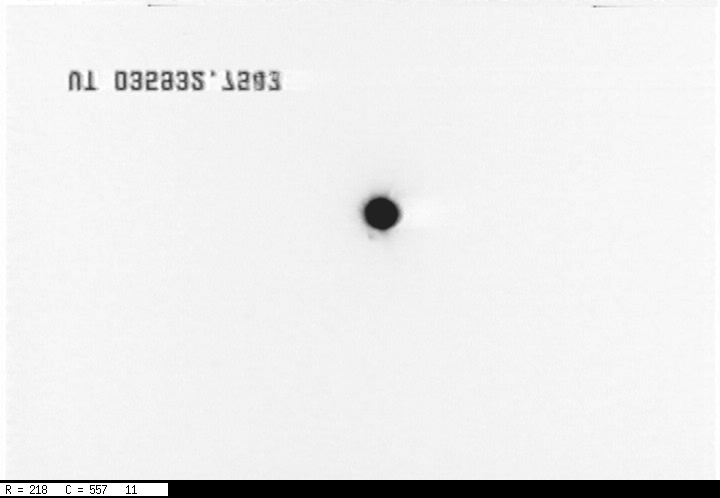
 Copyright © Michael Richmond.
This work is licensed under a Creative Commons License.
Copyright © Michael Richmond.
This work is licensed under a Creative Commons License.
On UT Feb 21, 2006, Derek Breit watched Mars closely to see if its moon Deimos would occult the star HD 24655, also known as GSC 1261-1027 = BD +21 556 = TYC 1261-1027-1. This was a very challenging event, because the star was only a few arcseconds away from the bright planet Mars; in addition, due to the tiny size of Deimos, there was only a small probability of seeing the occultation.
Derek's location for observing this event was at
Derek sent a VHS tape of his recording to me. I digitized it and analyzed it.
Each frame of the movie is 720x480 pixels. The clip I digitized is 2591 frames long, spanning about 86.5 seconds. Below is an example, frame number 1 out of the 2591 frames. First, a soft stretch:

Next, a harder stretch:
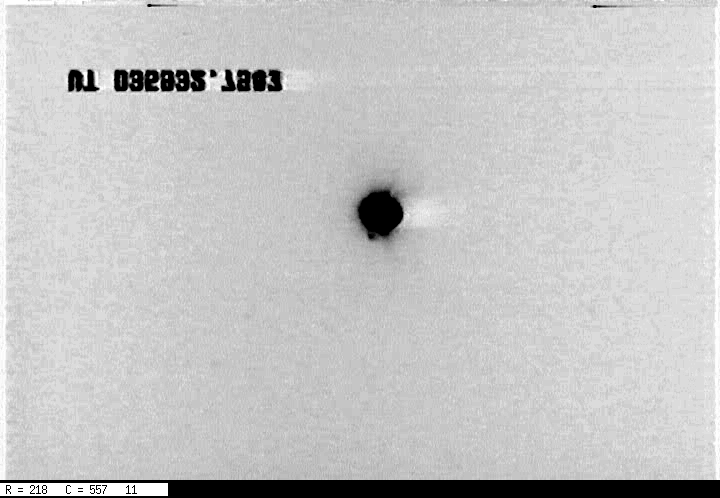
The star is the object just below the planet, a bit left of center. The timestamp attached to each frame lies in the upper-left corner of the image. My digitized version of the movie squished together two fields into a single frame, so that the timestamps were blurred. That wasn't a major issue in this case.
I processed this movie file in the following manner:
There are no objects visible in the field other than Mars and the target star. The FWHM was very hard to measure, since the only point source was so close to Mars. I guessed the FWHM was around 4 pixels.
For each of the 2591 frames, I
I used apertures of radius 3, 4, 5 pixels; after looking at the resulting light curves, I decided that the smaller the synthetic aperture, the better. I chose a radius of 3 pixels for the data shown below. The datafile below has columns for frame index number, 3-pix integrated light, 3-pix estimated uncertainty, 4-pix integrated light and uncertainty, 5-pix integrated light and uncertainty. Ignore the final columns filled with zeroes.
Here are quick views of the results. The maximum duration of an occultation would be 0.6 seconds = 18 frames. In the plots below, I place a horizontal bar of this size at an arbitrary position.
The entire light curve for the target. Note the slow variations, due to the atmosphere, I think.
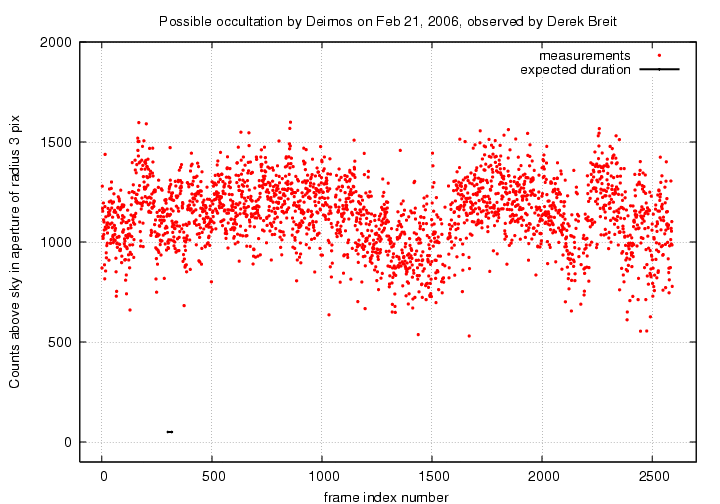
In all the following plots, I include errorbars based on a guess for the photon statistics of the star and local sky; I assume the gain of the camera was set to 1 count per pixel, which is unlikely. However, the errorbars have the nice effect of making gaps more obvious :-) I split the entire record into chunks of 600 frames for clarity.
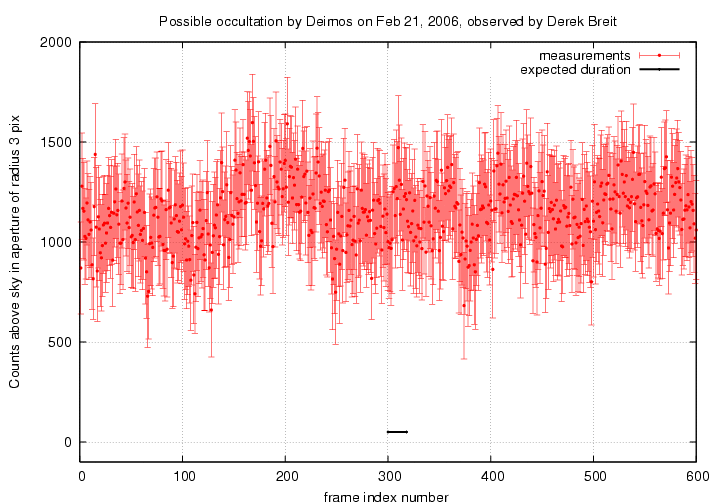
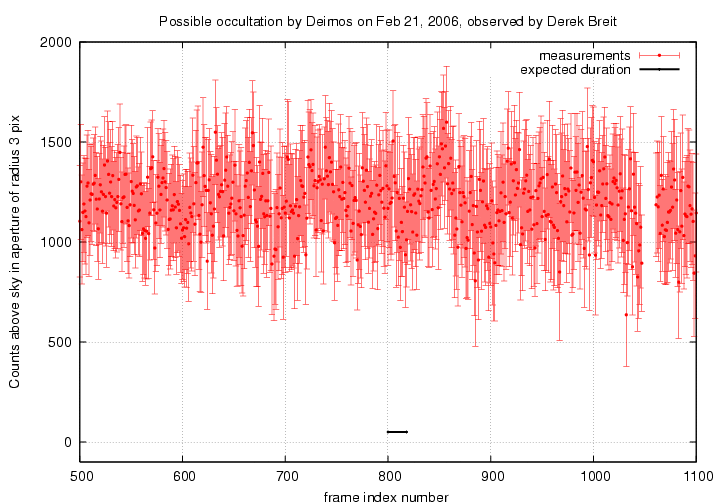
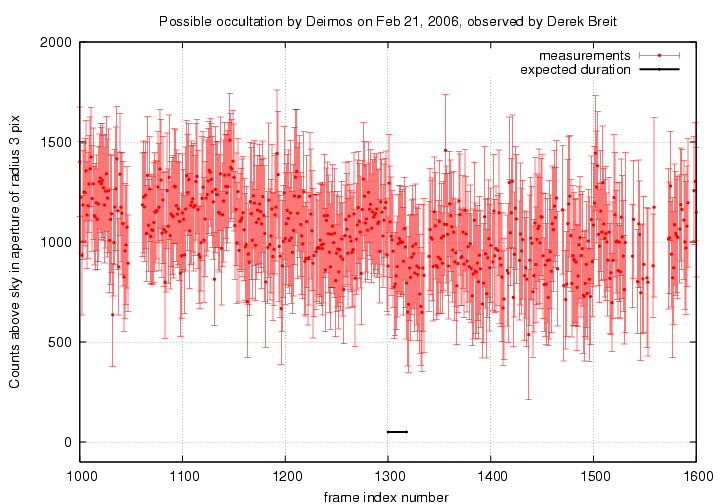
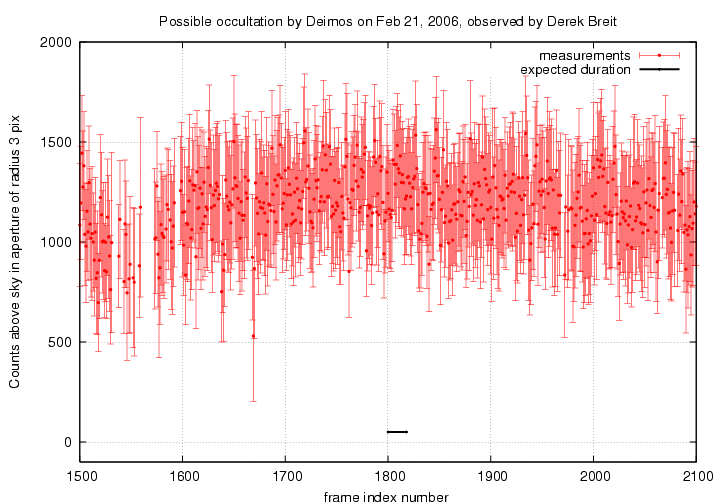
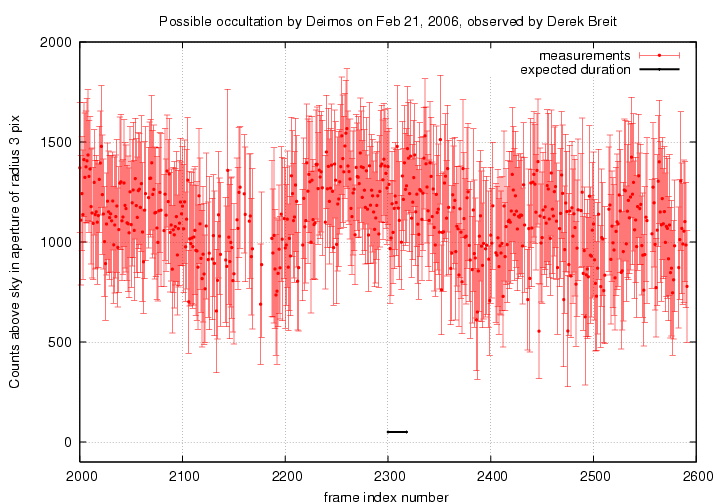
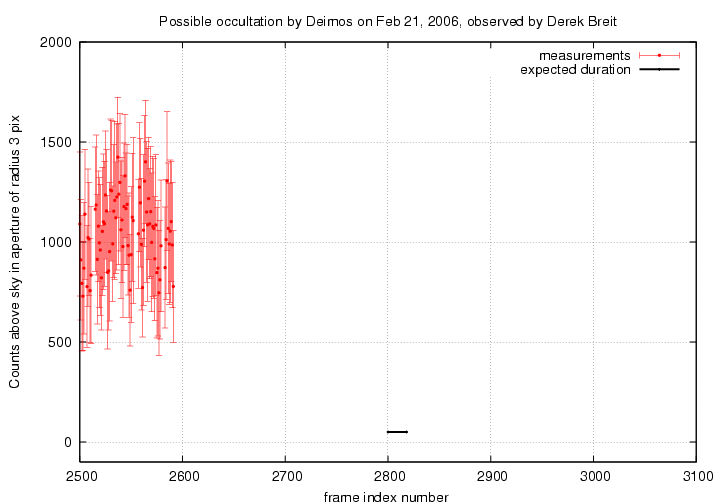
There are three gaps in the data of about the right duration.
frames 1047 - 1061 "gap 1050"
1559 - 1573 "gap 1550"
2177 - 2187 "gap 2180"
Could any one of them be real?
The prediction was for an event at UT 04:00:06, which falls
around frame 996.
I examined the individual frames in each of these regions carefully. Here, for example, is a mosaic showing each tenth image between 1001 and 1091.
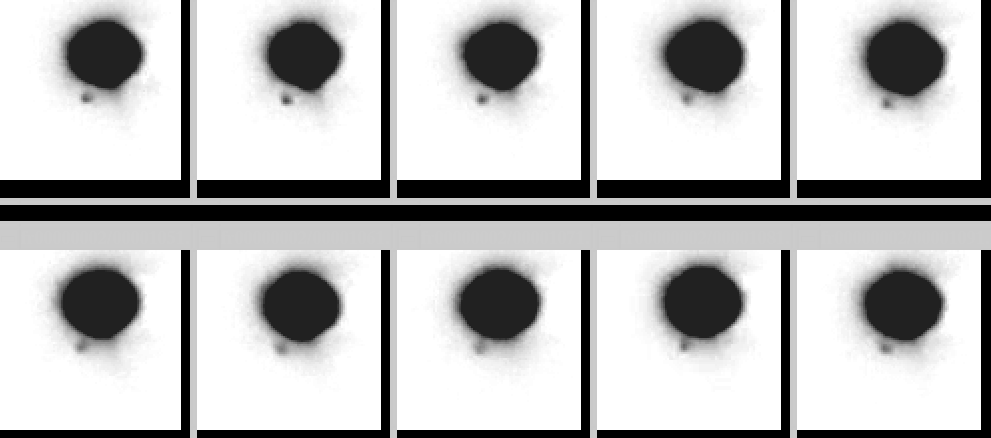
You can also look at animated GIFs of the frames around each of these gaps if you wish:
It is clear upon close inspection that these gaps are NOT due to any occultation; instead, they are simply groups of consecutive frames in which my software failed to detect the star. I suspect that intervals of particularly poor seeing or image motion are the cause of these gaps.
The bottom line: I find no evidence for any occultation by Deimos in this digitized section of Derek's videotape.
 Copyright © Michael Richmond.
This work is licensed under a Creative Commons License.
Copyright © Michael Richmond.
This work is licensed under a Creative Commons License.